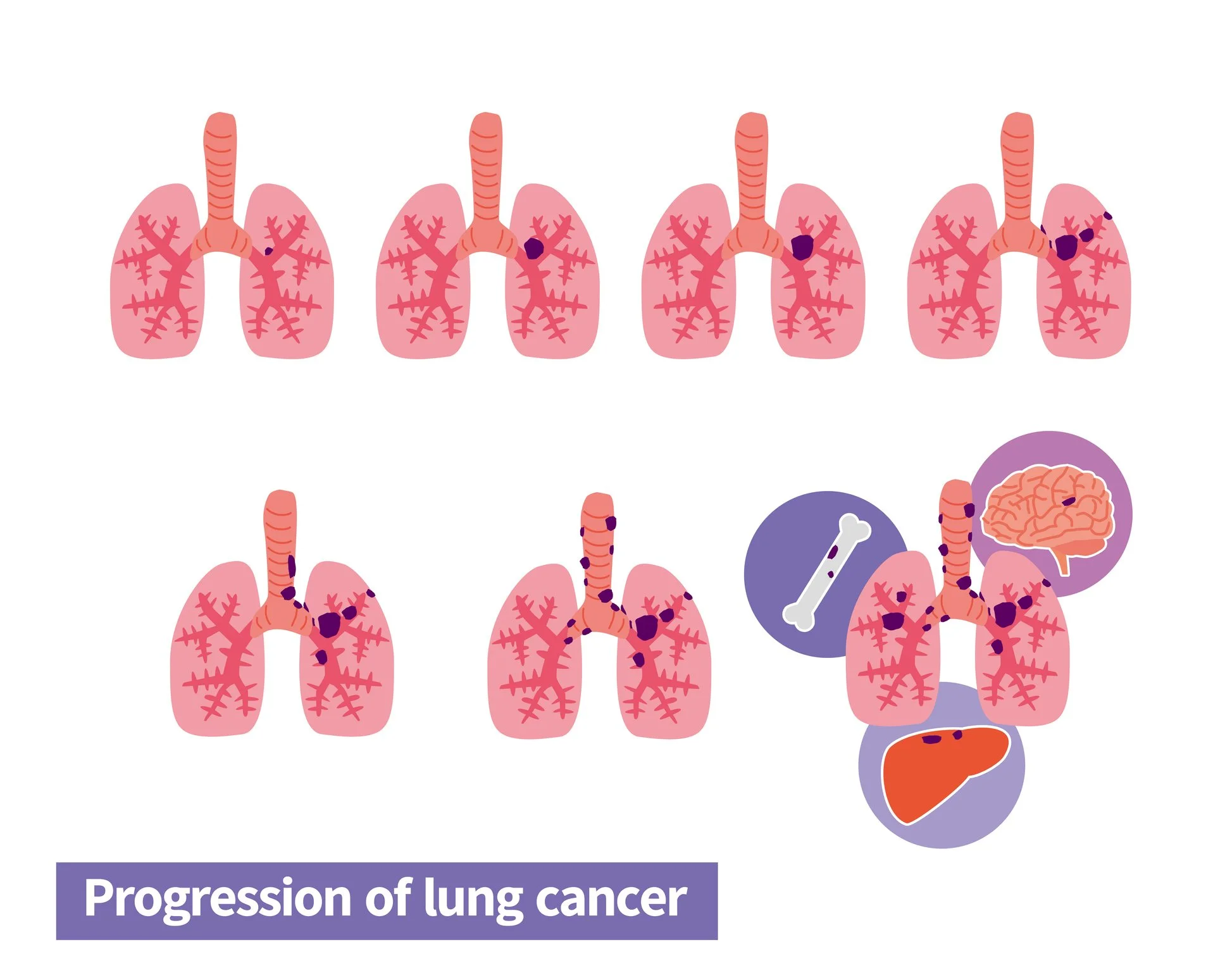How Long Can You Have Lung Cancer Without Knowing?
Introduction
Lung cancer is often referred to as a silent disease because its symptoms frequently go unnoticed until the disease has progressed to advanced stages. For many individuals, the absence of clear early warning signs means they may live with lung cancer for years without realizing it. Understanding how long lung cancer can go undetected and the factors that contribute to this delay is crucial in addressing its devastating impact.
Why Lung Cancer Often Goes Undiagnosed
Lung cancer is particularly insidious because it develops gradually and often doesn’t produce noticeable symptoms until the disease is advanced. Some contributing factors include:
Slow Progression: Lung cancer can develop over several years before becoming symptomatic.
Vague Symptoms: When symptoms do appear, they often mimic less serious conditions, such as chronic coughs, fatigue, or mild chest discomfort.
Limited Awareness: Many high-risk individuals, such as smokers, are unaware of the importance of routine screening.
Lack of Screening Access: Fewer than 6% of eligible individuals in the U.S. undergo regular lung cancer screenings.
Stages of Lung Cancer Development
Lung cancer typically develops in four stages. The timeline for progression can vary widely depending on the individual, cancer type, and lifestyle factors.
Stage 0 (Carcinoma in Situ)
At this stage, cancer is confined to the lung’s surface and has not spread. This stage often goes undetected as it rarely causes symptoms.
Stage I & II
Cancer is localized but may begin invading surrounding lung tissue. Symptoms, if present, are mild and nonspecific, such as a persistent cough or shortness of breath.
Stage III
Cancer has spread to nearby lymph nodes or other areas within the chest. Symptoms such as chest pain, coughing up blood, and difficulty breathing become more apparent but are sometimes mistaken for other respiratory conditions.
Stage IV
Advanced lung cancer spreads to distant organs. At this stage, the disease is typically diagnosed due to the severity of symptoms.
How Long Can Lung Cancer Remain Hidden?
In many cases, lung cancer can go undetected for months or even years. Non-small cell lung cancer (NSCLC), the most common type, typically develops more slowly than small cell lung cancer (SCLC), which can progress rapidly within weeks or months.
However, without regular screening, early-stage cancers may only be discovered incidentally during routine chest X-rays or scans for unrelated health issues.
The Scope of Lung Cancer
Lung cancer is a significant public health challenge in the United States, with over 650,000 people currently living with the disease. Depending on the source, it is estimated that 1 in 16 to 1 in 18 people will develop lung cancer in their lifetime. These numbers underscore the critical need for effective early detection and preventative measures. [3]
The Importance of Early Detection
Detecting lung cancer early drastically improves survival rates. According to the American Lung Association:
When detected at Stage I, the five-year survival rate is as high as 60%–90%. [1]
When diagnosed at Stage IV, the survival rate drops to less than 10%. [1]
This underscores the need for routine screening, particularly for individuals at higher risk, such as smokers, those exposed to asbestos, or individuals with a family history of lung cancer.
Cizzle Bio’s Role in Early Detection
At Cizzle Bio, we are revolutionizing the way lung cancer is diagnosed. Our CIZ1B Biomarker Test provides a simple, non-invasive blood test designed to detect early-stage lung cancer with high sensitivity. Unlike traditional methods such as CT scans, our test minimizes false positives and eliminates the need for invasive procedures.
Why Choose the CIZ1B Test?
Accuracy: Detects lung cancer at its earliest stages with 95% sensitivity.
Convenience: A simple blood test without the need for imaging.
Cost-Effective: Reduces unnecessary follow-ups and invasive procedures.
By bridging the gap in early detection, we aim to give patients the best possible chance of survival.
How to Protect Yourself
Know the Risk Factors
Smoking, family history, exposure to radon or asbestos.
Watch for Symptoms
Persistent cough, shortness of breath, fatigue, or unexplained weight loss.
Get Screened
Regular screening for individuals aged 50–80 with a history of smoking or other risk factors is essential. [2]
Conclusion
Lung cancer can remain undetected for years, but advancements in early detection technology, such as Cizzle Bio’s CIZ1B Biomarker Test, are paving the way for a brighter future. Early detection is the key to saving lives, and with regular screening and innovative diagnostic tools, we can move toward a world where lung cancer is caught early, treated effectively, and defeated.
References
WebMD. Lung Cancer Survival Rates. Accessed December 9, 2024.
Centers for Disease Control and Prevention (CDC). Lung Cancer Screening Guidelines. Accessed December 9, 2024.
Lung Cancer Research Foundation. Lung Cancer Facts. Accessed December 23, 2024.








